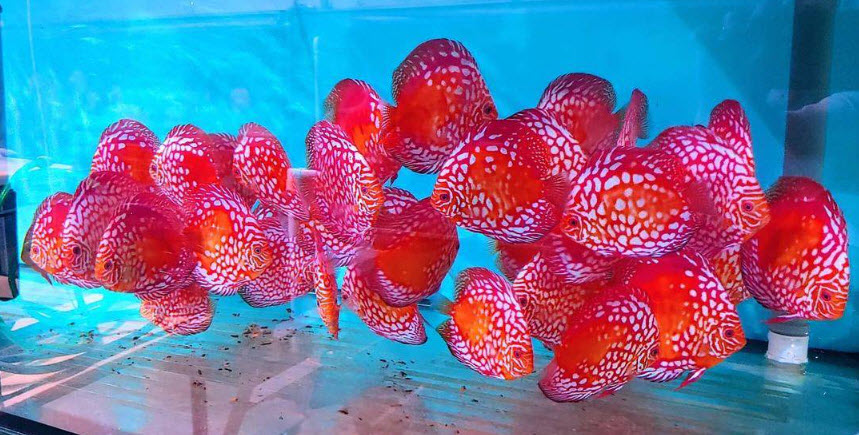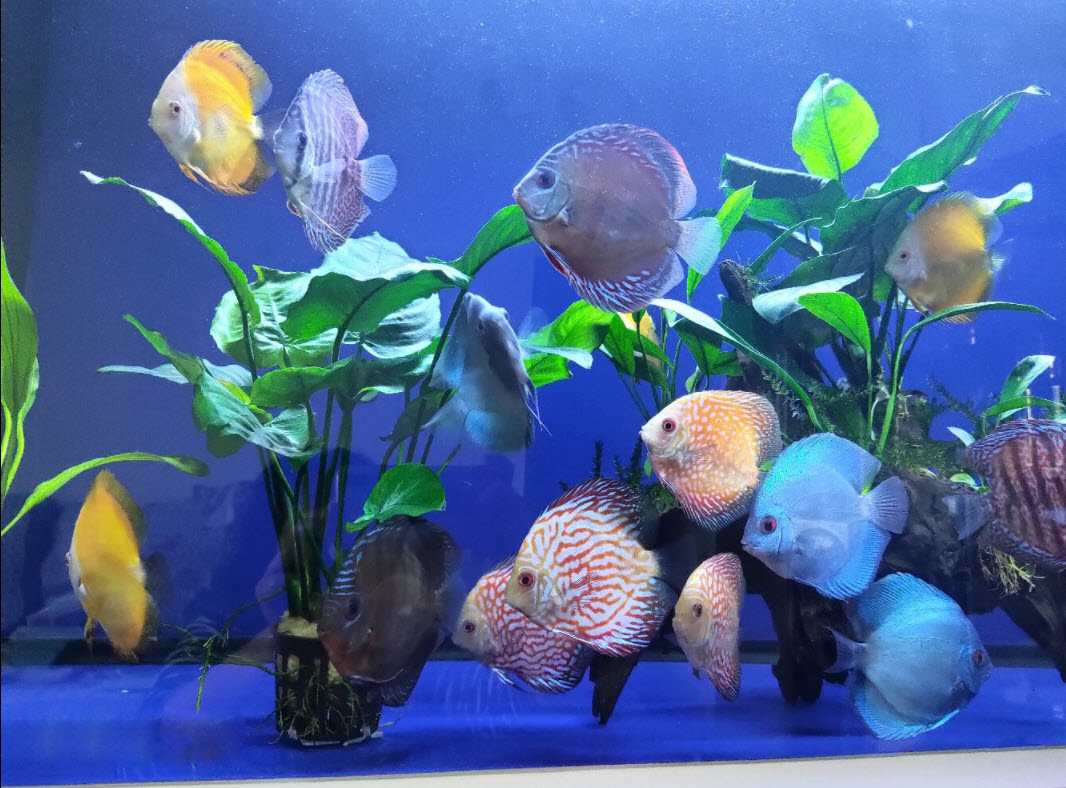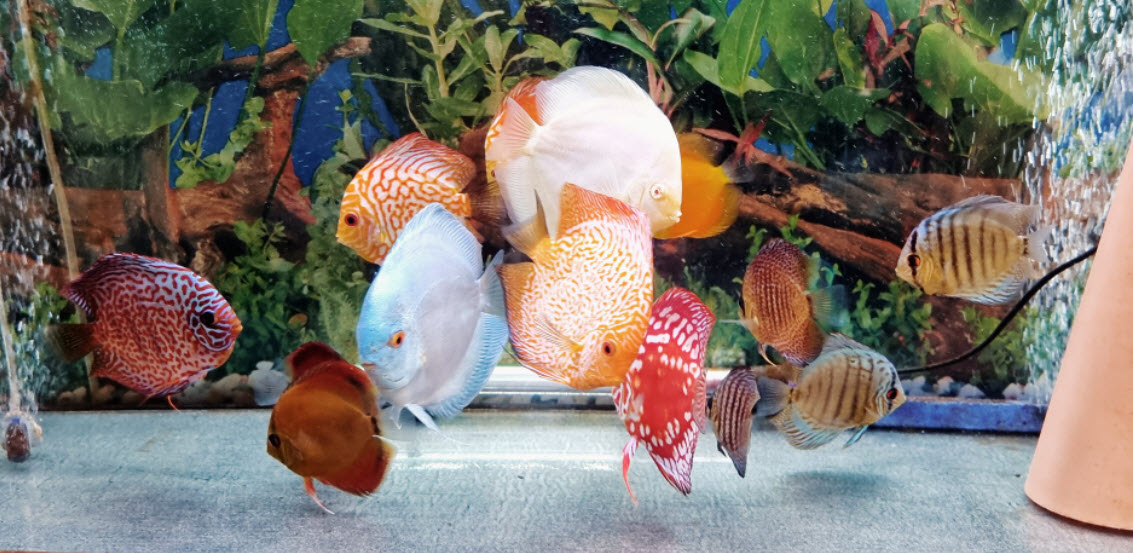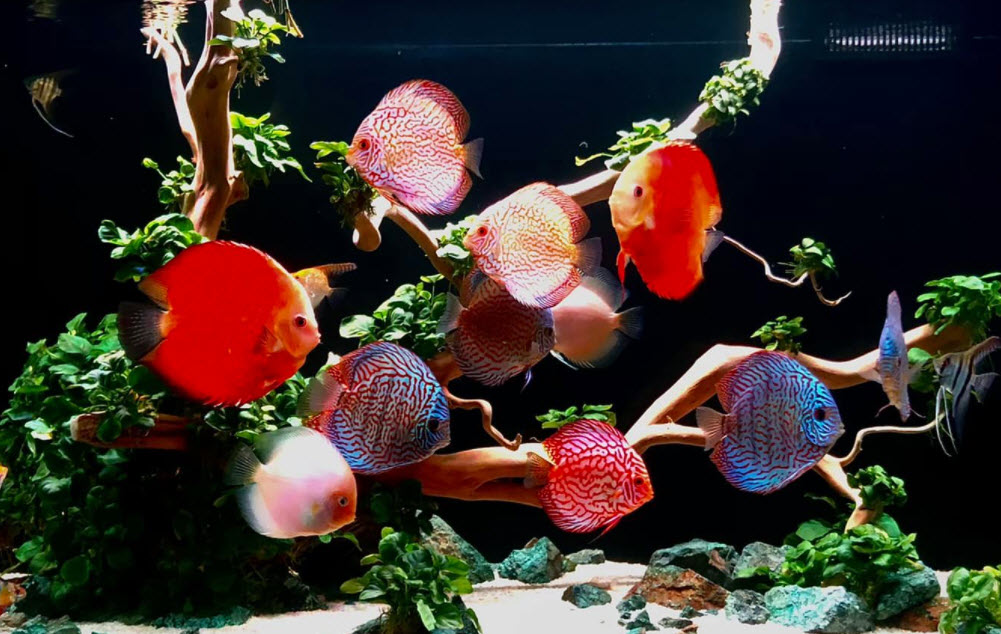
A pheromone is a chemical that an animal produces which changes the behavior of another animal of the same species. Think of a pheromone as a “smell”. These “smells” can be very complex and have a lot of components.
There is one large supplier of discus which started out their huge discus breeding faculty with a centralized filtration system. The discus in that centralized system tended to be small and to grow slowly. When they switched to each grow out tank having its own filtration system, the fish grew faster to larger sizes. So they hypothesized that larger discus put out pheromones that inhibit the growth of smaller fish.
They were close but not right on in their hypothesis. In actuality each separate “breed” or color of discus was putting out a unique combination of pheromones. Discus are less stressed when in water with pheromones that are the same as they have. I.e., discus like to be in family groups and do best when only a single “color” or “breed’ is in any given tank with any given filtration system.

In nature discus live for most of the year in large family groups of upwards of 500 individuals centered in fallen trees in a lake or river in the Amazon. During the rainy season the family groups break up and the discus move out into the flood plain as individual fish, roaming far and wide.
As the flooding subsides they all gather again in the SAME family groups. They do this year after year. Both DNA analysis and analysis of the color patterns on the fish have confirmed that all the discus around any given downed tree are all closely related. The discus probably identify their family groups by “smell”, i.e. pheromones.

So if a discus is in an aquarium with discus of other color variations and “breeding”, the pheromones in the water will be foreign to them and they will be slightly stressed. They will constantly be trying to “find” their “family”. So it is a good idea to keep only one color variation of discus.
But note this is only for the “optimum”. As most of the photos on this page reveal, discus of different color variations do quite well together. They just won’t get as big as fish kept in a family.

Growth Inhibiting Hormones
Several breeders of discus say that small discus are inhibited by growth inhibiting hormones put out by larger discus. They recommend never mixing small discus in with bigger discus. But growth inhibiting hormones are never released into the water by fish.
Growth inhibiting hormone are very short lived entities with half lives of five minutes or less. They never have a chance to get into the water and then into another fish. (“The effects of somatostatin on serum growth hormone levels in the goldfish, Carassius auratus”. Cook et al, 1984, “The influence of mammalian and teleost somatostatins on the secretion of growth hormone from goldfish [Carassius auratus L.] pituitary fragments in vitro,” Marchant et. al., 1987, “Somatostatin inhibits growth of rainbow trout,” Very et. al., 2005, “Neuroendocrine Regulation of Growth Hormone Secretion and Growth in Fish,” Peng et. al. 1997).
The growth inhibition seen is probably more the fact that the larger fish hog the food. Large discus can intimidate smaller discus during feeding quite easily.
Note that I suspect this is also true for mixing discus with other similar large Amazonian fish. Mixing discus with angelfish, severums or uaru probably will have a slight negative effect on the discus.

Information on Discus
The following articles will be useful reading if you are contemplating keeping discus:
17.11. Discus
17.11.1. Discus Husbandry
17.11.2. Filtration for Discus
17.11.3. Water for Discus
17.11.4. Food for Discus
17.11.6. Breeding Discus
17.11.7. Discus Aquarium Photos
.
Return to Fish Selection Menu
.
Aquarium Science Website
The chapters shown below or on the right side in maroon lead to close to 400 articles on all aspects of keeping a freshwater aquarium. These articles have NO links to profit making sites and are thus unbiased in their recommendations, unlike all the for-profit sites you will find with Google. Bookmark and browse!
.

Luis A says
Hello,
I set up my 120 gallon + sump Amazon cichlid tank following your filtration recommendations (fluidized K1 plus 30 ppi Poret foam) and utilizing the metabolic weight scale you provided. Success!! Thank you.
Most “specialty” fish stores still use the 1 gallon of water per inch of fish! They can’t believe that I have 126 fish with room to spare for another pound and a half of fish!
Anyhow, I have been in conversation with Discus “experts”, all of which agree on three things: RO water, significant weekly water changes AND 84-86 degrees temperature. This has kept me from setting up a discus tank. First, I don’t want a 86 degree heater inside the house that I like to keep at 77 degrees and 50% relative humidity, and second, I want a tank to enjoy, not become a slave of it!
Today I came back and read all your articles on Discus…..happy to say that, once again, I will follow your recommendations……..
Thanks a million for sharing such wealth of knowledge.